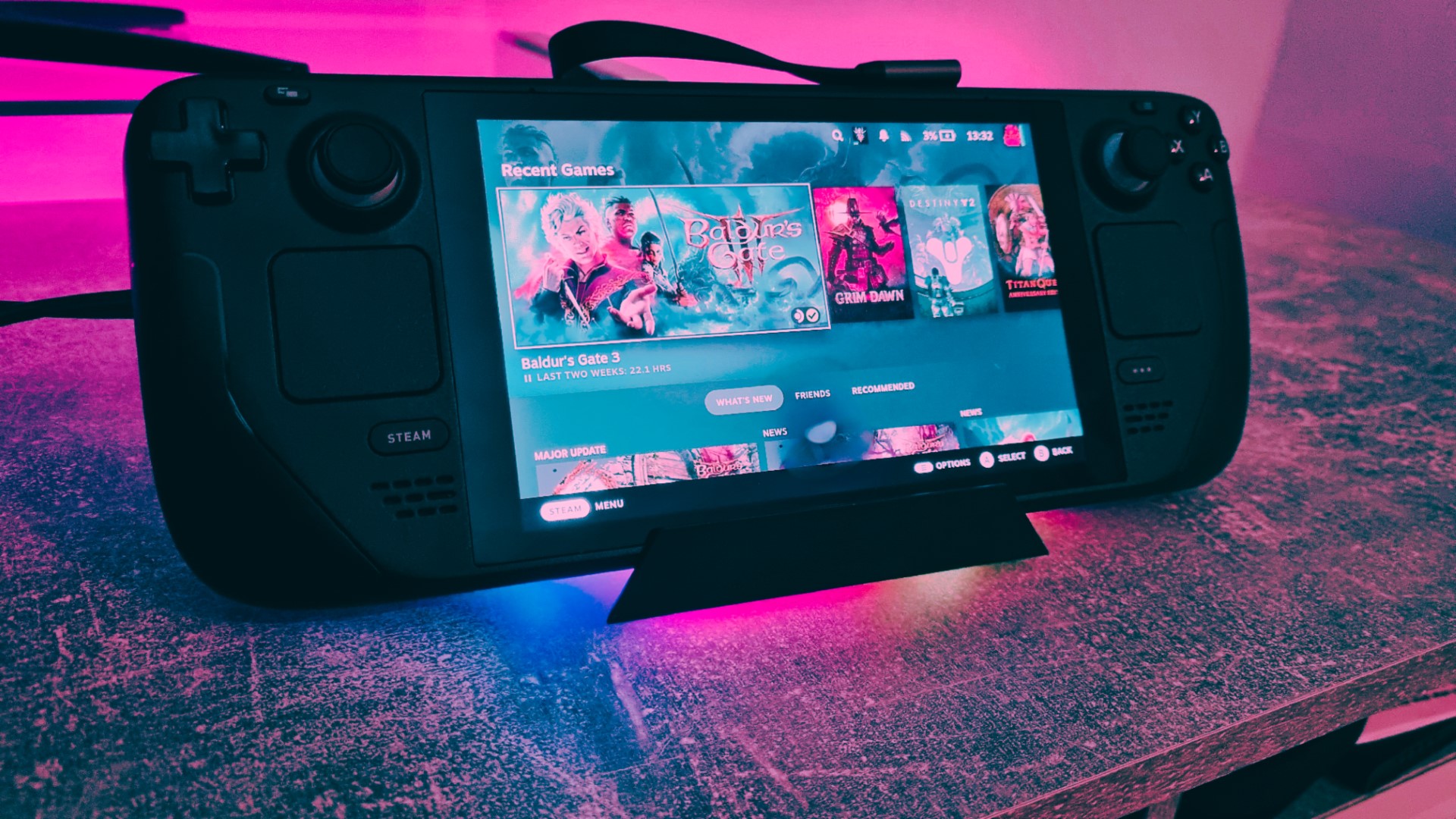
Undoubtedly, the Steam Deck and its success was a pivotal point in gaming. It's not the first gaming handheld by a longshot, but it is the one that injected some much-needed life into the market and encouraged competitors to follow with their own answer to PC gaming on the go. Since the Steam Deck's launch we've seen devices like the ROG Ally and the Lenovo Legion Go which in some areas perform better than the Steam Deck, and I'm sure Valve have been watching with interest as they formulate their plans for the Steam Deck 2.
While the argument of the Steam Deck vs the Lenovo Legion Go and Steam Deck vs ROG Ally rages on among consumers, I've already made up my mind. My heart remains with the Steam Deck and, by extension, the Steam Deck OLED, which I purchased last year for my partner. It's not a perfect device by any means, but Valve certainly could get closer to achieving perfection with the Steam Deck 2. Here is my personal wish list for what I'd like to see in the Steam Deck sequel, and what will implore me to upgrade from my OG LCD model.
1. Better performance for AAA titles
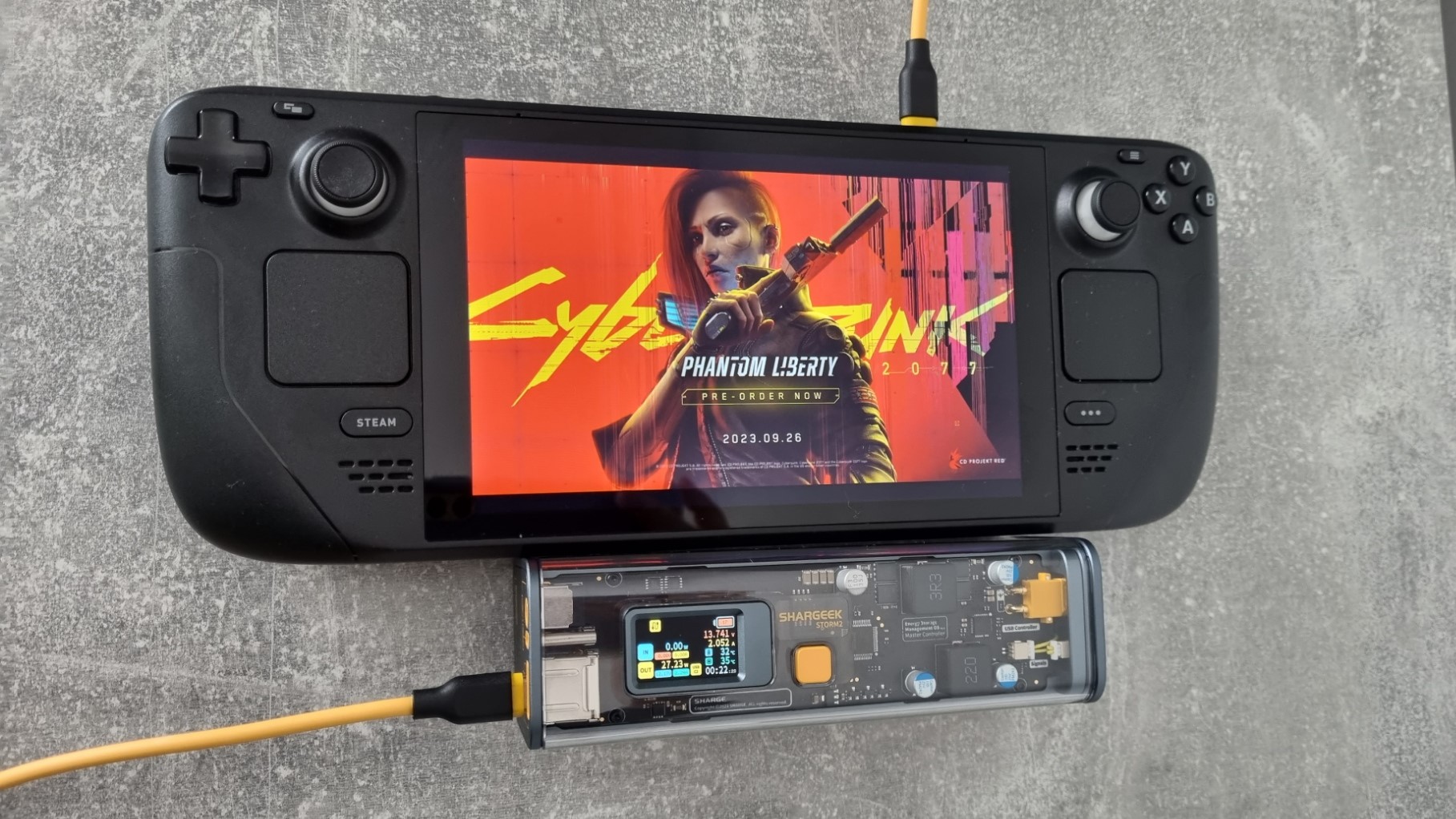
Right now, as much as I love my Steam Deck, I use it for playing less power-hungry games. It's not that it can't play AAA games, it's just other handhelds do it better.
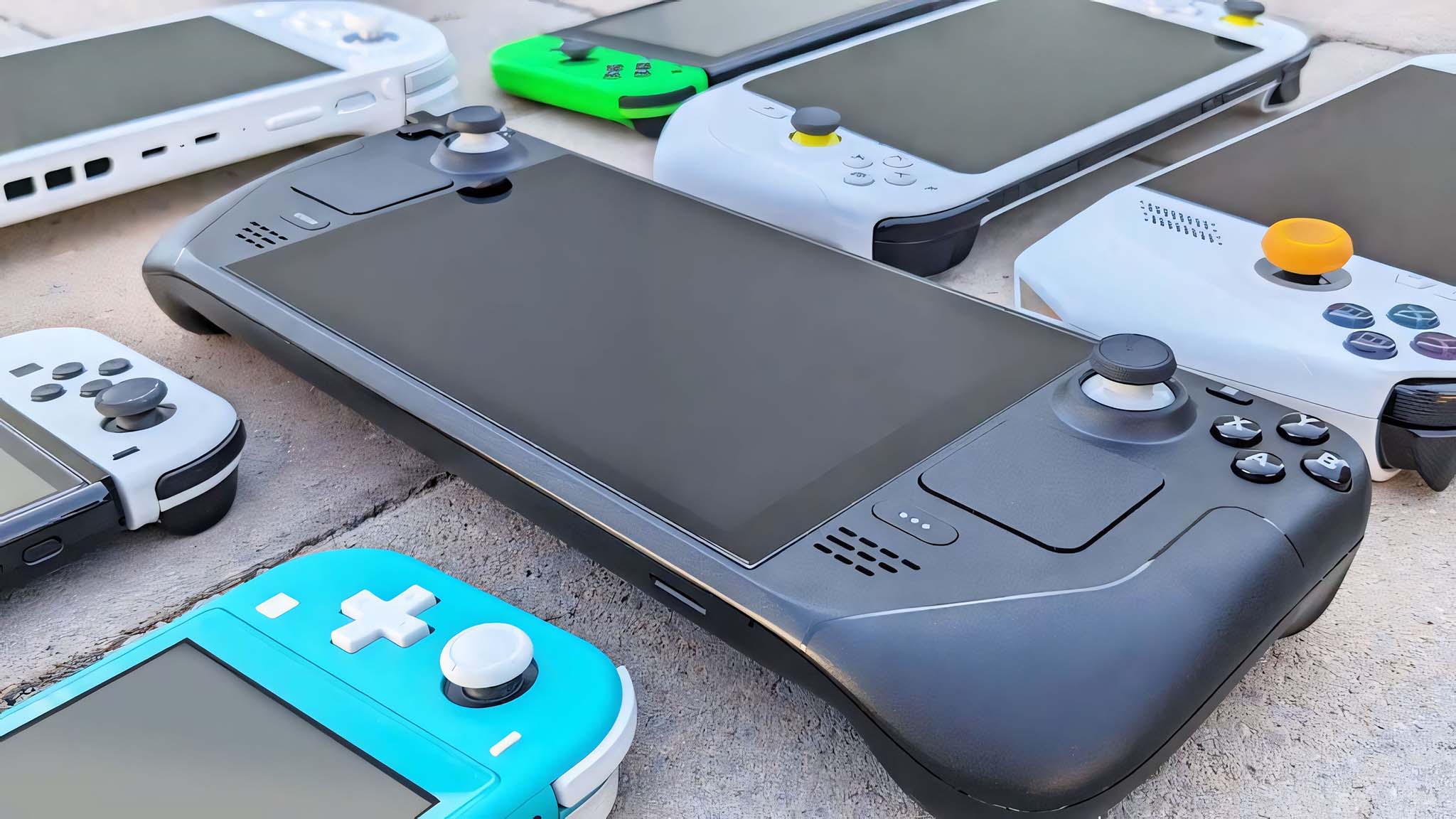
- Best gaming handhelds 2024
- I was wrong about the ROG Ally
- Lenovo Legion Go Review
- Best power banks for ROG Ally
- Steam Deck OLED vs Steam Deck LCD
I still have a vast library to choose from, and I have played big titles like Baldur's Gate 3, which is absolutely fine overall, but not without making huge sacrifices in the graphical department to get it to run effectively. It took a lot of trial and error with the settings for this game, and I still wasn't happy with how it looked compared to the experience of just booting up on my Xbox. Many have reported issues with titles like Starfield in big cities. Regarding the more graphically intense games, alternatives like the ROG Ally drastically outperform the Steam Deck due to its more powerful components.
There are methods out there to get more performance out of your Steam Deck, you've probably already heard of the VRAM hack where users bump up the VRAM usage from 1GB to 4GB, and even taking your Steam Deck apart and installing your own RAM upgrade. But it's not something most out-of-the-box users would be comfortable tinkering with (including myself) and isn't a silver bullet to solve all performance issues. Ultimately, I'd like to see the Steam Deck 2 compete more closely with devices like the ASUS ROG Ally by upgrading the RAM, processor, and screen refresh rate while still keeping the price competitive.
2. Improved battery life
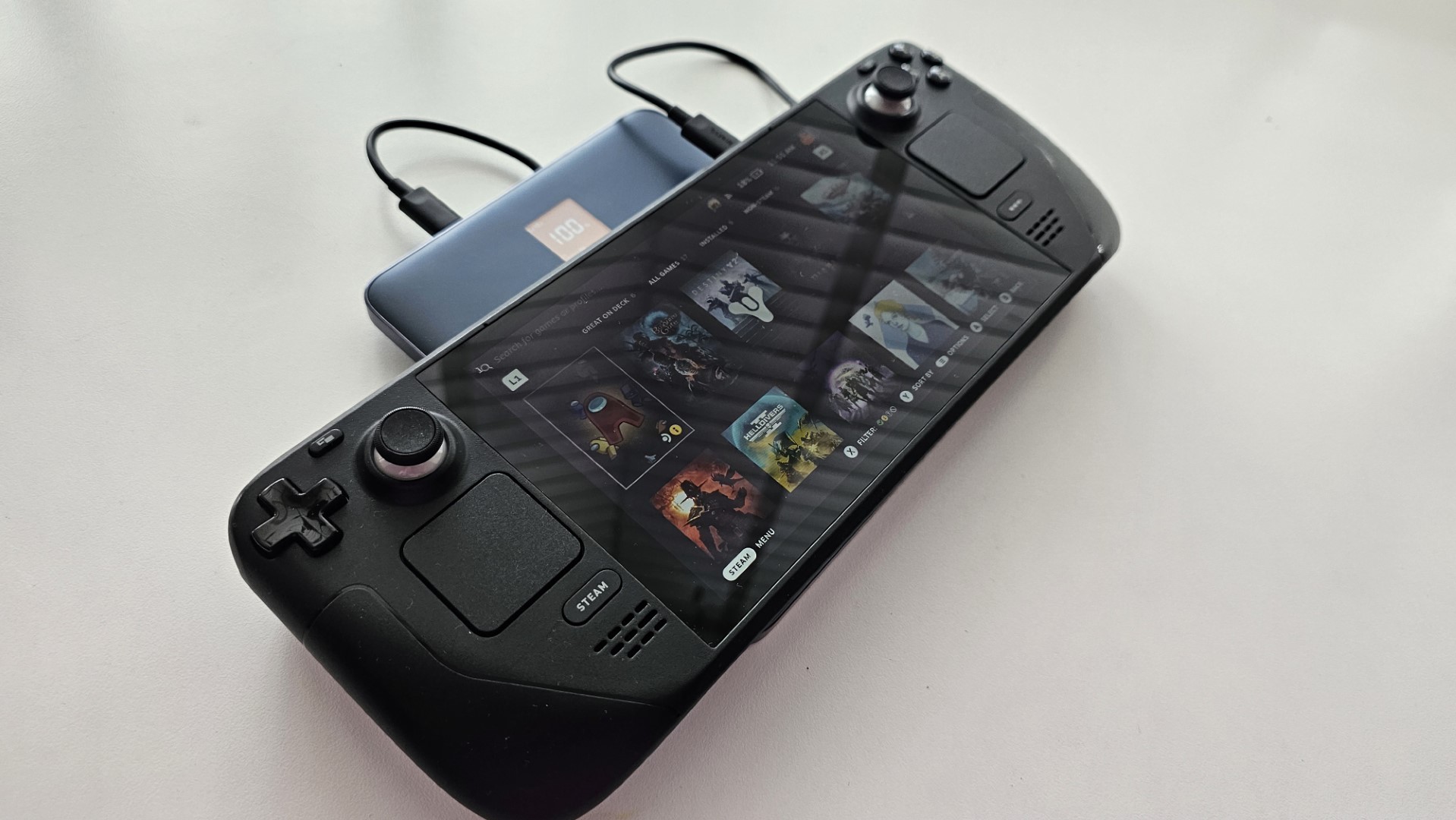
This one goes without saying, but I'll say it anyway. The battery life on the Steam Deck sucks. Large improvements have been made to the Steam Deck OLED, which has a larger 50Whr battery. Comparatively, the Steam Deck lasts around 1-3 hours and the OLED model 3-12 hours. Still, results vary dramatically depending on the game you are playing, so I mostly play mine plugged in, and when on the move, I'm never without one of the best Steam Deck power banks in my backpack.
It's worth noting that no handheld has yet (that I know of) really solved the conundrum of balancing performance with a reasonable battery life. The Steam Deck outperforms the ROG Ally when it comes to life away from the power socket, but that's because of how powerful the ROG Ally performs. The closest to perfection I've found is the Logitech G Cloud, which supposedly clocks in at 12 hours, but I've known it goes longer than this from personal experience — but of course, it does; it's cloud-based gaming that doesn't draw much power from the device itself.
My absolute dream would be for the Steam Deck 2 to clock in around 10 hours and do that consistently, not just advertise that battery life but still need charging after less than an hour of a Diablo 4 session. If they can pull this off, I'll be happy.
3. Give me an extra USB-C port, please!
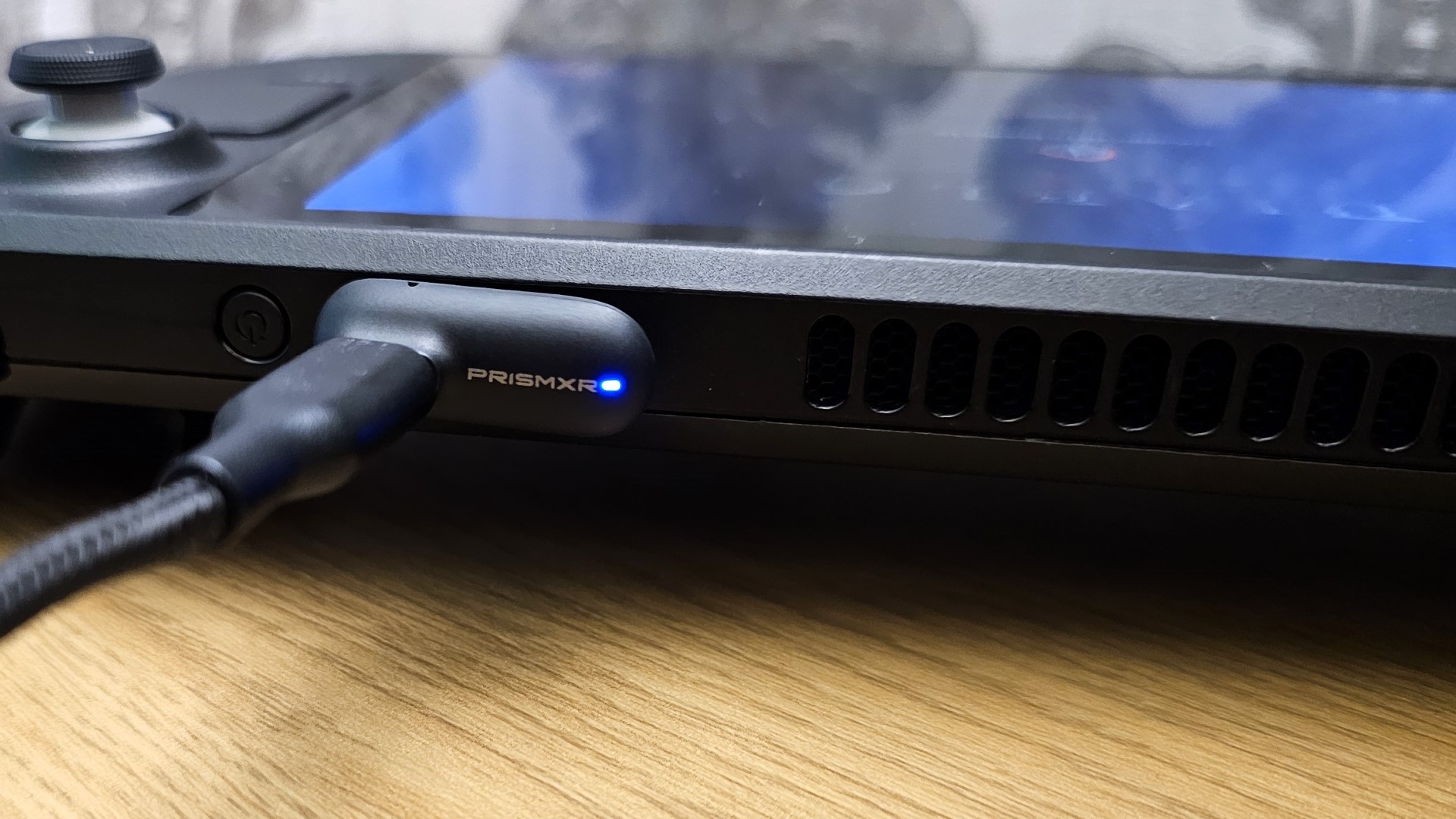
There's only one USB-C port on the Steam Deck, meaning if I want to plug in an accessory and still be able to charge it, I'm relying on that accessory having some form of pass-through charging. X Real AR glasses have recently launched their own accessory that lets you use the X-Real glasses at the same time as charging the Steam Deck. Additionally, there's a bunch of Steam Deck docks that you can use to extend the ports on your device, but rather than rely on third-party companies to create their own answer to the charging issue, many problems would be solved with just having two USB-C ports. Also, the fewer Steam Deck accessories like adapters and docks I need to carry with my handheld, the better.
4. Built in support for other gaming apps
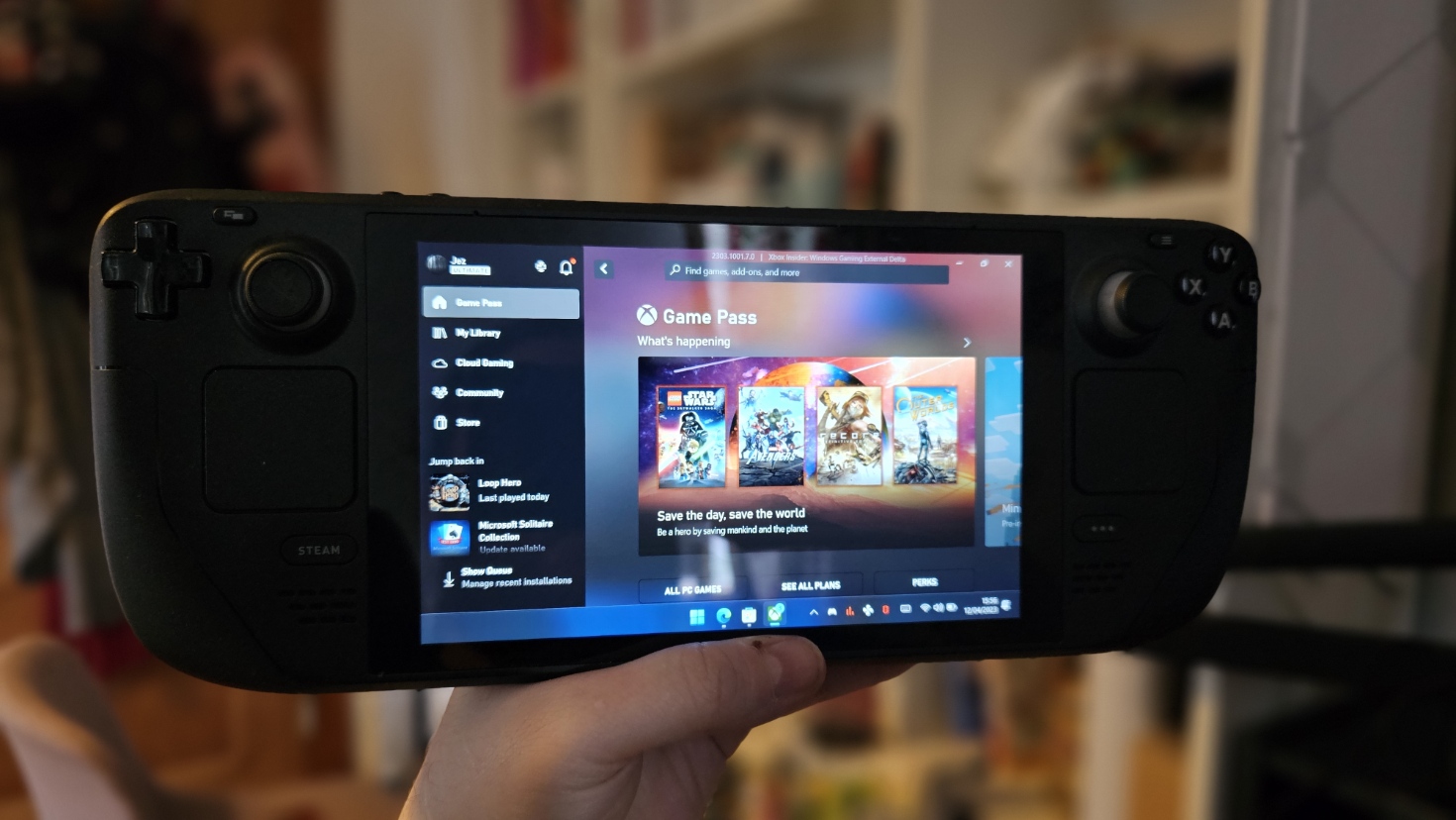
The ROG Ally is Windows-based, so you can install any gaming launcher you want, be that Steam, Epic Games, or Xbox PC. The Steam Deck of course only comes with it's own store, and though you can install other launchers like Battle.net, for example, I really don't like how they have to appear as 'games' in my Steam Deck library rather than their own individual app. It's messy, and I have to attach a keyboard and mouse, go into Desktop mode, and install the thumbnails myself too. I'm all about convenience, and not everybody will want to go through 10-20 steps of a tutorial to get Blizzard and Xbox games on their Steam Deck, or have to dual-boot Windows on the Deck. I'm not bothered about having Windows specifically on the device, but I want to see more natural and user-friendly integration of other stores and options. Some argue that Steam Deck, giving preferential treatment to its own store, guarantees profit from its own game sales, allowing it to sell for much lower than the Windows-based competitors. Still, considering the workaround for getting other stores on the handheld are widely known, I think there is hope we could see some expansion in the store options.
The rumor mill is currently in full force over Steam potentially coming to Xbox following CEO Phil Spencer's comments on wanting PC gaming stores on the console, but I'd also like the reverse to be a consideration for Steam. Xbox may well already be working on its own handheld, but in its interest on every screen being an Xbox, getting on the Steam Deck 2 would be immense.
5. A lightweight design

Size matters, and the Steam Deck is a chonky handheld. The size isn't as much an issue as is the weight of the device, which again was somewhat improved with the launch of the Steam Deck OLED. They both weigh 1.48 lbs and 1.41 lbs, respectively, but I still feel the need to rest my wrists on a pillow when playing; in fact, I have repurposed a nursing pillow as my official gaming pillow. The ROG Ally is noticeably lighter at 1.3lbs despite using higher spec components, so I'd like to see the Steam Deck 2 compete more closely with this. The ROG Ally's aesthetic isn't to my personal taste. I think the Steam Deck is much cooler, but I'd like it to be lighter. Currently, the absolute most comfortable handheld I own is the Logitech G Cloud at just 1.02 lbs; the difference in feel playing this is astounding, though I appreciate it has fewer components to fit in under its shell.
6. Steam Deck Design Lab
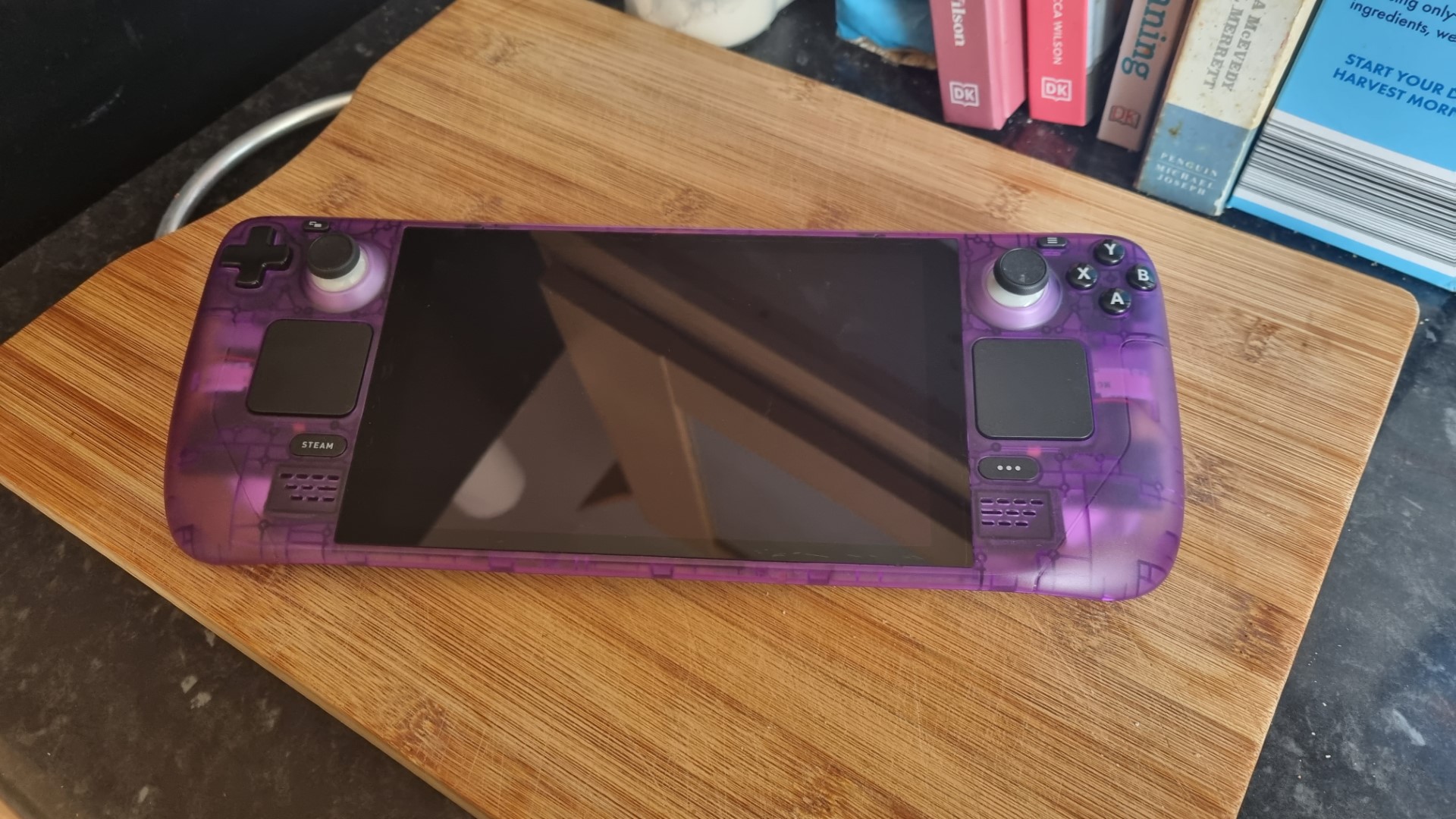
Modding the Steam Deck's outer shell, buttons, and joysticks is extremely popular. Third-party suppliers like JSAUX and Extreme Rate sell beautiful front and back plates, RGB lights, new shiny buttons, and even alternative haptic pads. Heck, I even tried it myself, destroying my Steam Deck in the process. What I really want is something akin to the Xbox Design Lab, where I can choose my own colorway, and Valve will ship it out for me, rather than trust myself to actually rip the unit apart, voiding my warranty in the process. Given how the community collectively lost their minds over the limited edition Steam Deck OLED with its smoky transparent design and red accented joysticks, it's clear Steam Deck fans are willing to pay a little bit extra for something different.
The current system of getting shells from third parties limits customization to people who are skilled and confident in taking small tech apart. Not many people want to learn this and risk breaking a $500 device. Those who do live to regret it—trust me, I know.
7. Hall-effect sticks and micro-switch face buttons
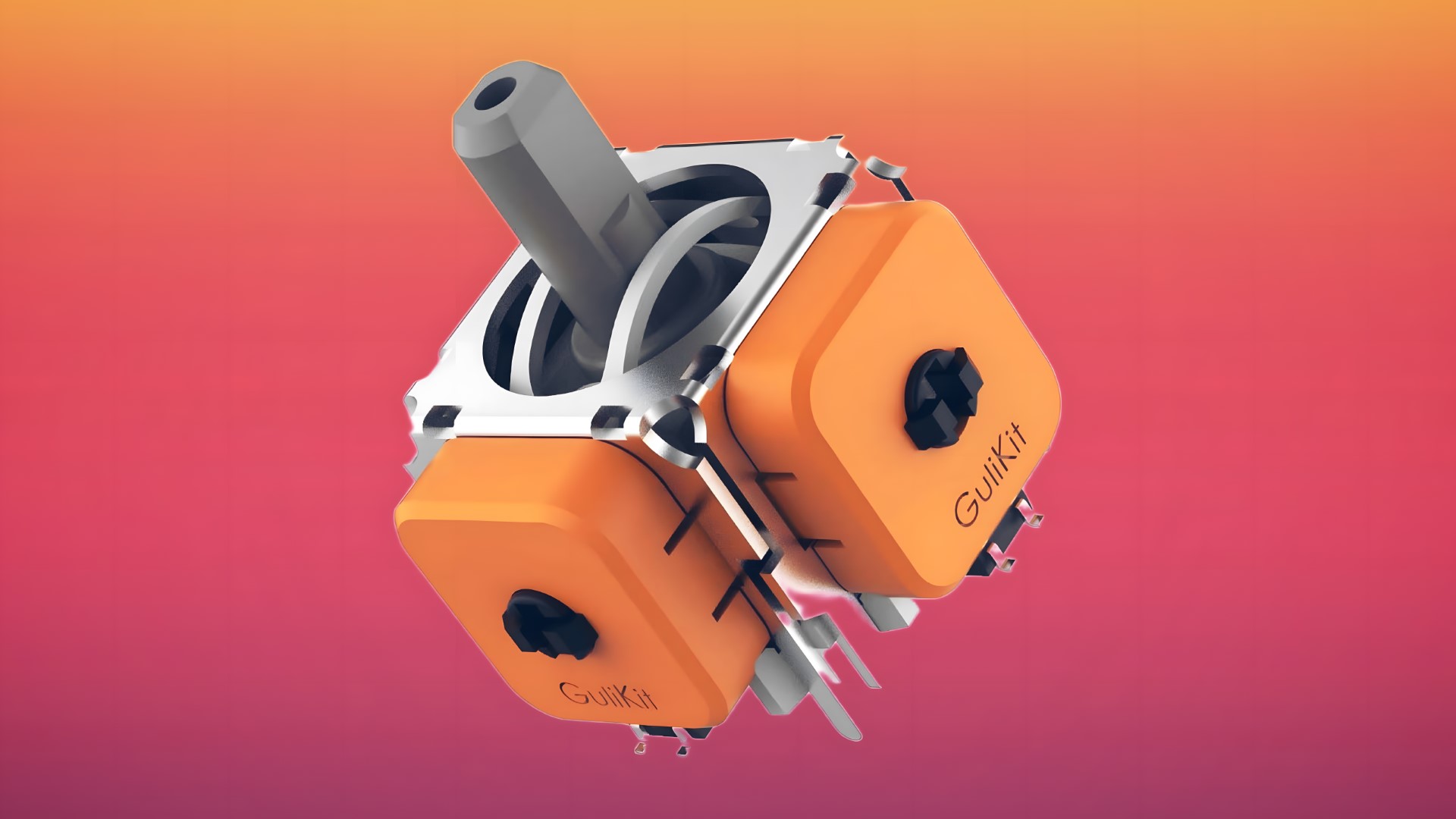
Hall-effect is gaining traction as a marketing beat for gaming controllers, and for good reason. Rather than relying on physical contact between components, they rely on magnets to measure position, distance, and movement in your games. The lack of physical contact means Hall-effect sticks have more longevity, and you are highly unlikely to experience stick drift. The lack of these in the Steam Deck and similar handhelds is what initially gave me pause when it came to deciding on to purchase a handheld or not, having experienced the notorious joystick drift of multiple Nintendo Switch sticks, but having the option actually replace the joy-cons themselves and not be forced to replace the entire device.
Ultimately, I purchased a Steam Deck anyway, but I do worry about the sticks giving up on me and rendering the device useless. There are replacement options from Fixit and even Gulikit to create Hall-effect sticks for you to install yourself, but going forward, I'd like to see Hall-effect sticks as a standard component of an expensive gaming device like this. The Ayaneo devices are already stealing the Steam Deck's thunder with this tech, so Valve must follow suit for its fans. Throw in some tasty microswitch face buttons like the GameSir T4 Cyclone, and Valve can easily take my money.
Steam Deck is close to perfect for me, but it can be better
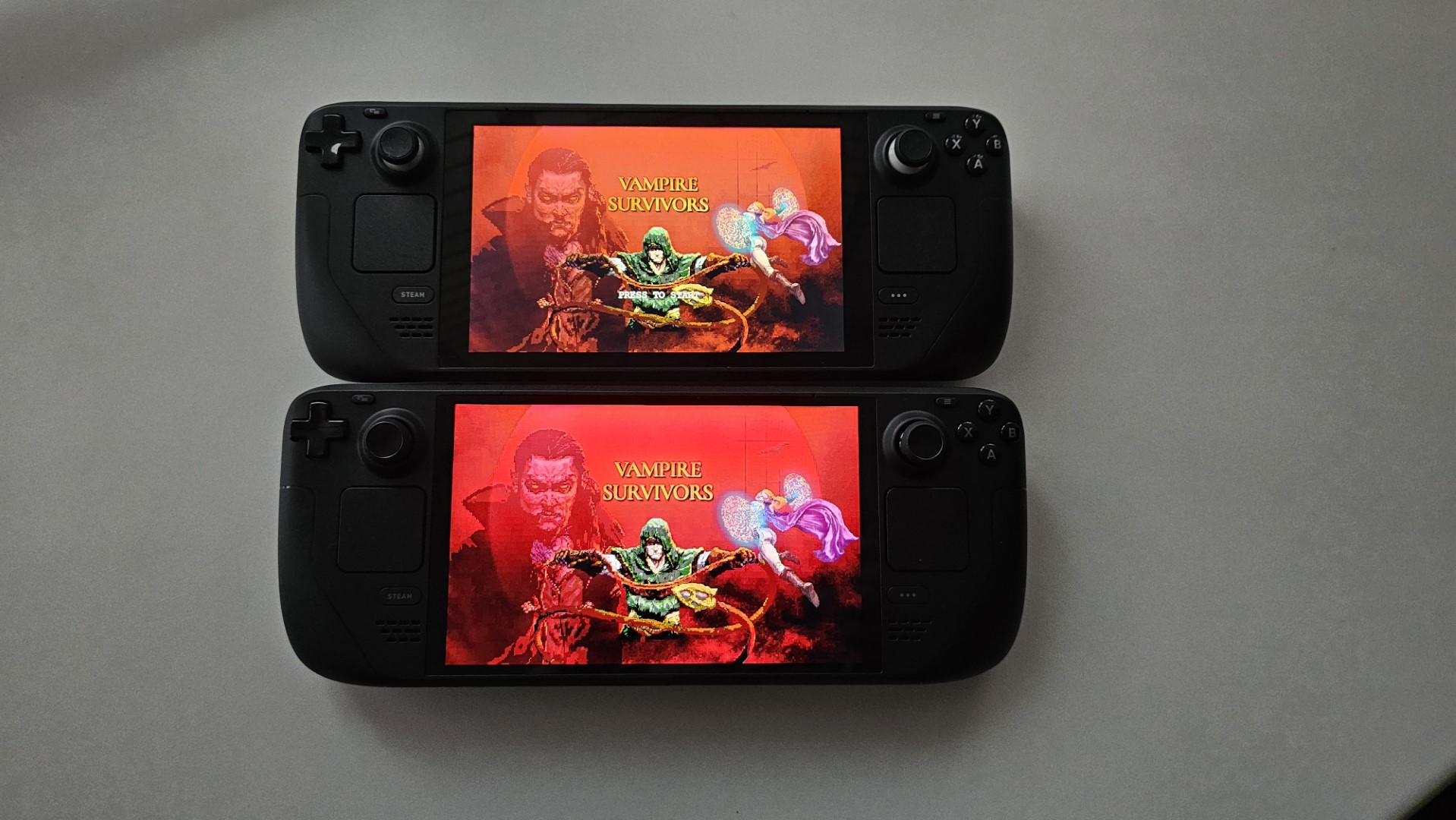
I've tried a bunch of handhelds, and the Steam Deck remains my favorite despite some of its shortcomings. I firmly believe it set the standard and while other handhelds have overtaken it in areas like performance, they can't match its cool factor and UI. Despite the onslaught of gaming handhelds that have hit the market following the Steam Deck's launch, they are all still chasing perfection, with each having its own individual strengths and weaknesses. If Valve can take inspiration from where devices like the ROG Ally and Lenovo Legion Go have done well, it could well craft the ultimate perfect handheld gaming unit. ROG Ally is already working on its own sequel, and our resident handheld expert, Becca, has her own thoughts on what could be in the works in this Asus ROG Ally 2 FAQ.
What would your perfect handheld look like, and what would you like to see in the Steam Deck 2? Comment below I'd love to read other ideas!







